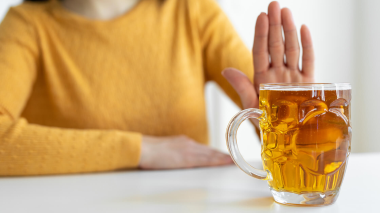We all know vigorous exercise has measurable benefits for your muscular, circulatory and respiratory systems, but physical activity also play a key role in preventing bone loss and osteoporosis in older people and maximizing bone mass in younger people.
Like muscle, bone is a living tissue that responds to stimuli – including exercise. “Bone mass peaks in both men and women between the ages of 25 and 30 before slowly starting to decline,” said Robert Alcott, DO, of Sports Medicine & Injury Care at Atrium Health. “The rate of decline is different for everyone, but individuals who stay active in weight-bearing and impact activities can slow the rate of bone decline and lower their risk of osteoporosis and fractures.”
Defy gravity for bone health
Weight-bearing exercises – which force your body to work against gravity – are the most beneficial for bone health. These exercises include weight-training, jumping, hiking, jogging and most competitive sports. While other exercises like swimming and bicycling are also great for your body, they don’t have the same marked benefits to the skeletal system as weight-bearing exercises. Dr. Alcott also notes even further benefits from high-impact activities like jumping, sprinting, CrossFit and competitive sports, which he said all include elements of “high-impact plyometrics.”
“I recommend high-impact exercise to most of my adolescent and young adult patients who are already exercising,” said Dr. Alcott. “It’s is important to try and stimulate as much bone production as possible at a young age (before bone mass starts to decline).”
For middle-aged and elderly patients, Dr. Alcott takes a more calculated approach. “The risks and benefits for these patients must be weighed differently,” he said, noting that issues such as osteoarthritis and joint pain can limit the ability to perform high-impact exercises.
“As with most things in life, moderation is key,” he said. “Too much high-impact activity can lead to injuries like stress fractures and tendinitis, so it’s important to ease into a high-impact regiment and rest accordingly.”
Of course, exercise is only one piece of the puzzle for optimum bone health. Proper nutrition – especially adequate amounts of Vitamin D and calcium – is crucial, as is avoiding harmful substances like tobacco and alcohol. One of the most important ways to promote bone health is to encourage children to participate in sports and exercise early in life, which Dr. Alcott said most likely improves long-term bone mass and decreases the risk of fractures later in life.

Dr. Alcott is a physician specializing in Sports Medicine with Atrium Health's Sports Medicine and Injury Care team.



